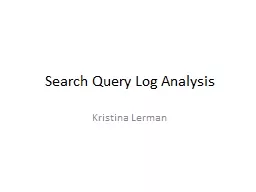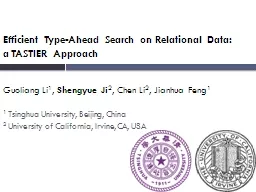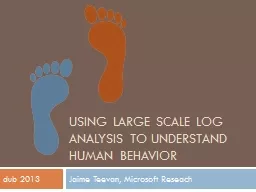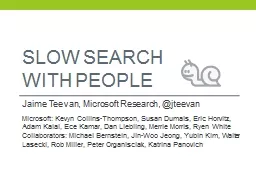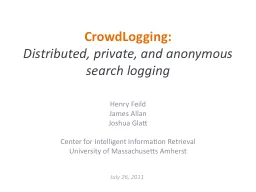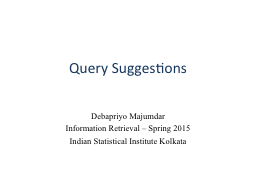PPT-Search Query Log Analysis
Author : tatiana-dople | Published Date : 2018-11-04
Kristina Lerman What can we learn from web search queries Characteristics Length has steadily grown over the years 1990s lt 2 terms 2001 24 terms 2014 long search
Presentation Embed Code
Download Presentation
Download Presentation The PPT/PDF document "Search Query Log Analysis" is the property of its rightful owner. Permission is granted to download and print the materials on this website for personal, non-commercial use only, and to display it on your personal computer provided you do not modify the materials and that you retain all copyright notices contained in the materials. By downloading content from our website, you accept the terms of this agreement.
Search Query Log Analysis: Transcript
Download Rules Of Document
"Search Query Log Analysis"The content belongs to its owner. You may download and print it for personal use, without modification, and keep all copyright notices. By downloading, you agree to these terms.
Related Documents

